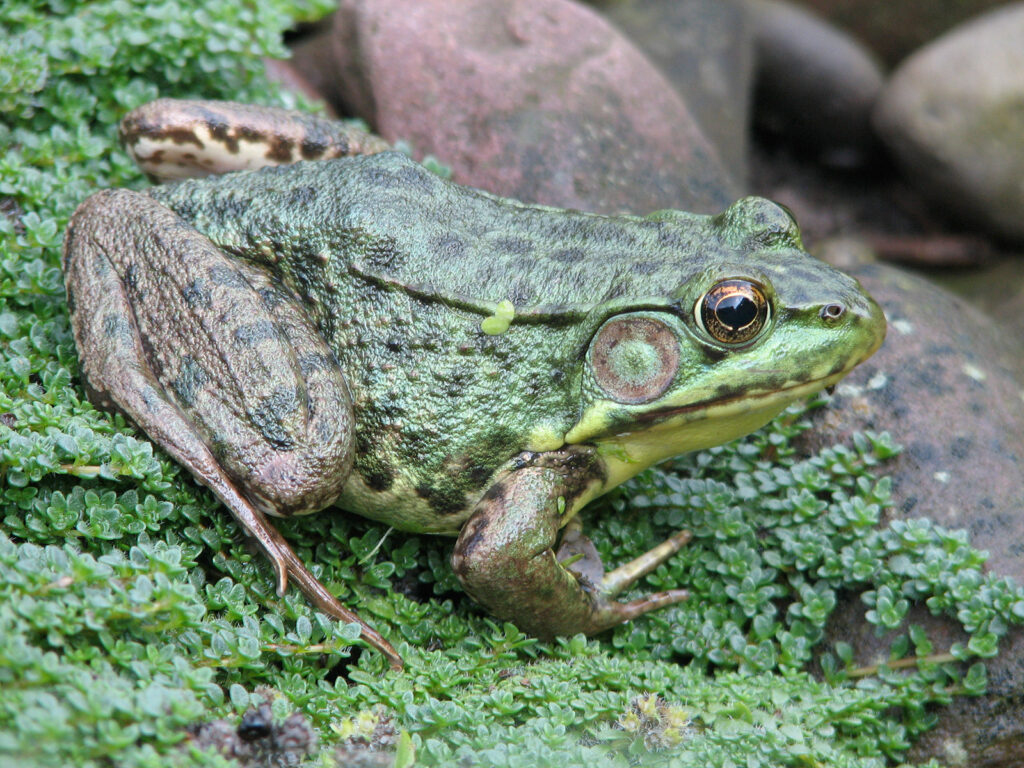
We’ve always had toads (though not as many as we have now), but for a few years we also had green frogs (pictured here).
One year we had a single spring peeper.
Here are our experiences with amphibians’ habitat basics:
Toads
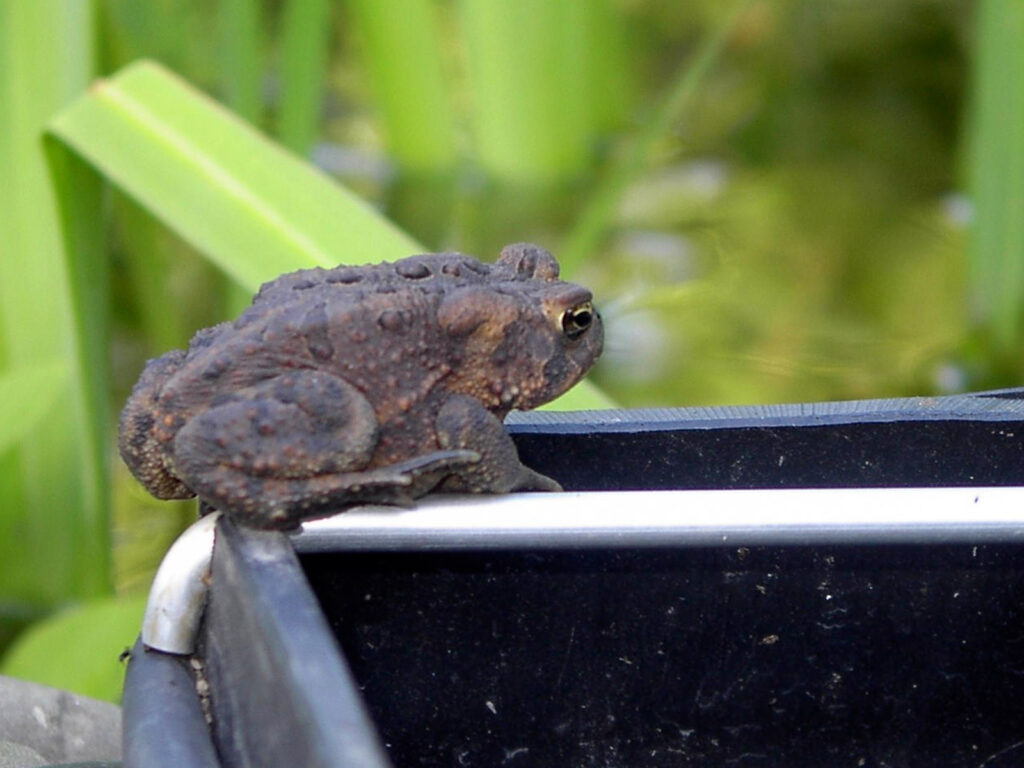
Toads are a type of frog — a lumpy frog. In other words, all toads are frogs, but not all frogs are toads!
I always think of Arnold Lobel’s children’s books about Frog and Toad when I see these creatures. Toads look very curmudgeon-y.
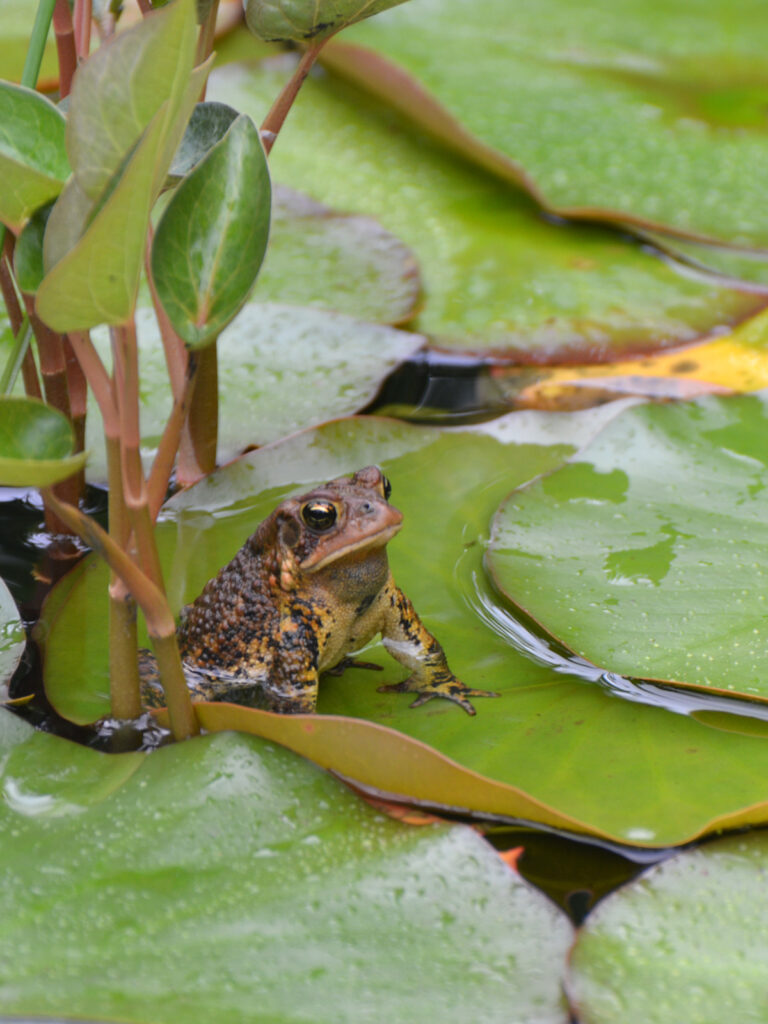
We’ve seen toads mating and have followed their life cycle ever since we built our pond in 2002. That’s a lot of toads!
Here is our record of when they starting singing each year.
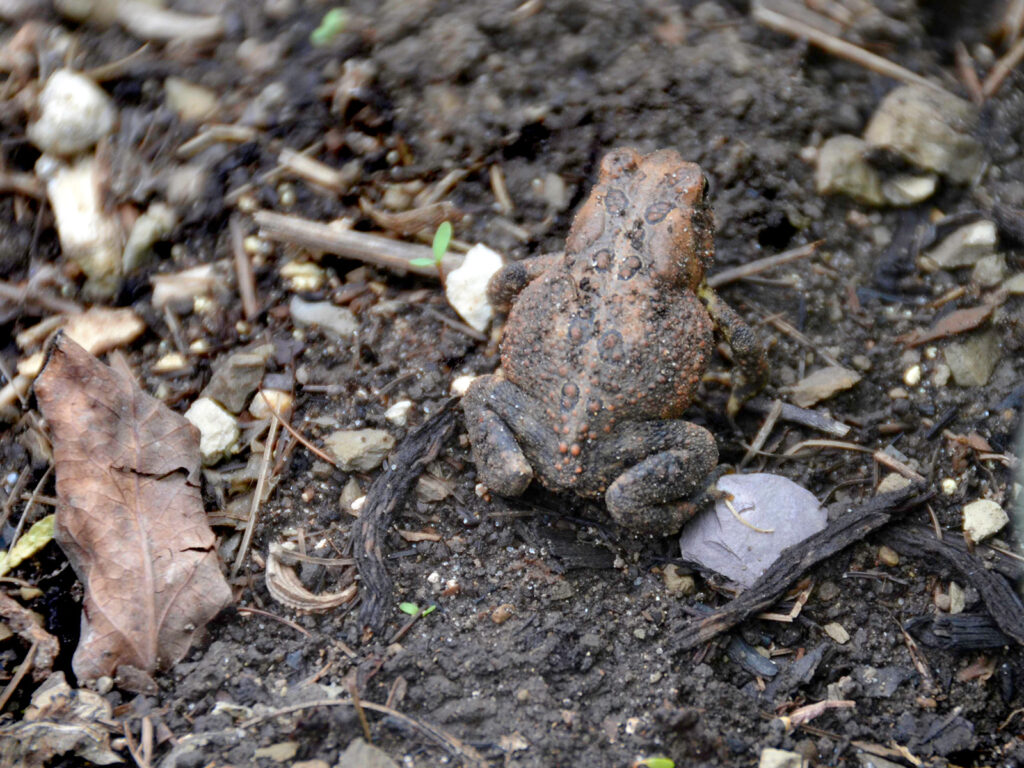
We enjoy seeing the different generations of toads in our yard each year, though they aren’t around much in the daytime. The one in the photo is probably a second year toad and most likely is one of the toads that grew from an egg laid in our pond.
Apparently most toads live only a year or two in the wild, though they’re capable of living ten years or more. We hope we have a safe enough environment for them to live more than just a few years, but if not, at least we’re providing a lot of replacements each year — probably more than can survive in our conventionally landscaped neighborhood.
We would love to know how many toads are in our yard, but I know of no way to determine that. I believe we have a very toad-friendly yard, and so I hope we have a lot.
You can never have too many toads. As they say, “If you have too many slugs and other creatures eating your plants, you don’t really have too many slugs. You have too few toads!”
Here’s a variation on our usual American Toad that appeared in our yard.
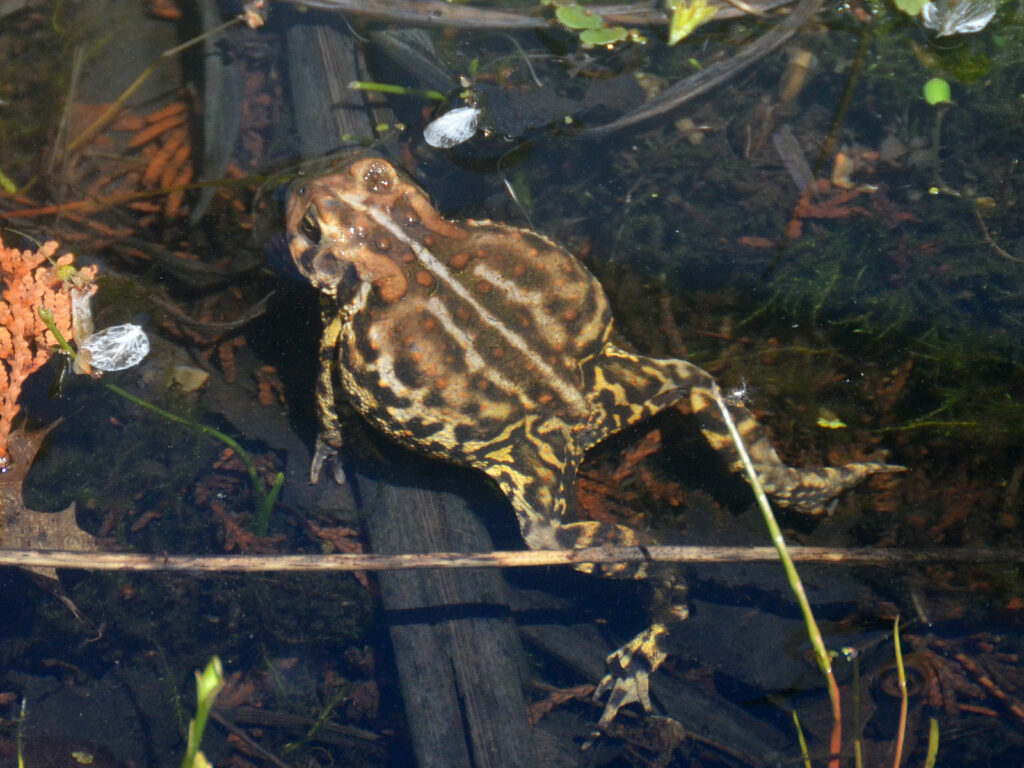
According to Fred Schueler, director of the Bishops Mills Natural History Centre in Ontario, “It’s a northern-looking American Toad. 300 km north of here it would be unexceptional, and I imagine there are places in the Adirondacks where it would also be unexceptional. Toads and many other species tend towards a more contrasting red/brown/white pattern to the north, to match the colour of the vegetation and to be more contrasting when they’re viewed by predators in daylight.”
Frogs
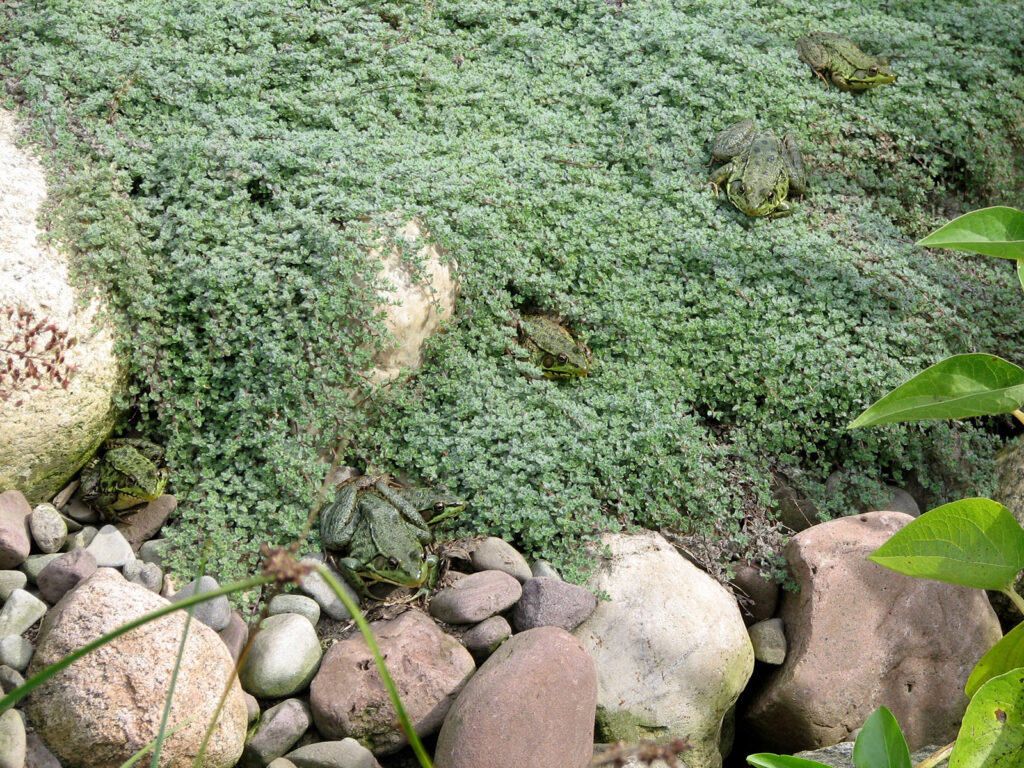
Unlike most people’s reported experience when they add a pond, we built it, but they didn’t come. After a few years with no frogs, a friend brought young frogs that had taken up residence in his swimming pool. Here are five of them enjoying sitting in the soft thyme near the pond.
I’ve heard that it’s not a good idea to remove frogs from their home, but these young frogs would have otherwise been killed by the soon-to-be-added chlorine.
Many stayed in our pond, but some did go off to seek their fortune: probably certain death on the roads since there are no other suitable places for them around here.
We’d never buy the tadpoles sold in stores. I wouldn’t trust that they’d be locally-appropriate, native species. Non-native species could create just one more problem for the world.

Our first batch of donated frogs laid eggs the following year, and the tadpoles overwintered. This went on for three or four years. They were nice to have since they were usually visible during the day, unlike toads which we see only during mating season and occasionally around the yard. Toads are there, but they’re hiding away, sleeping.
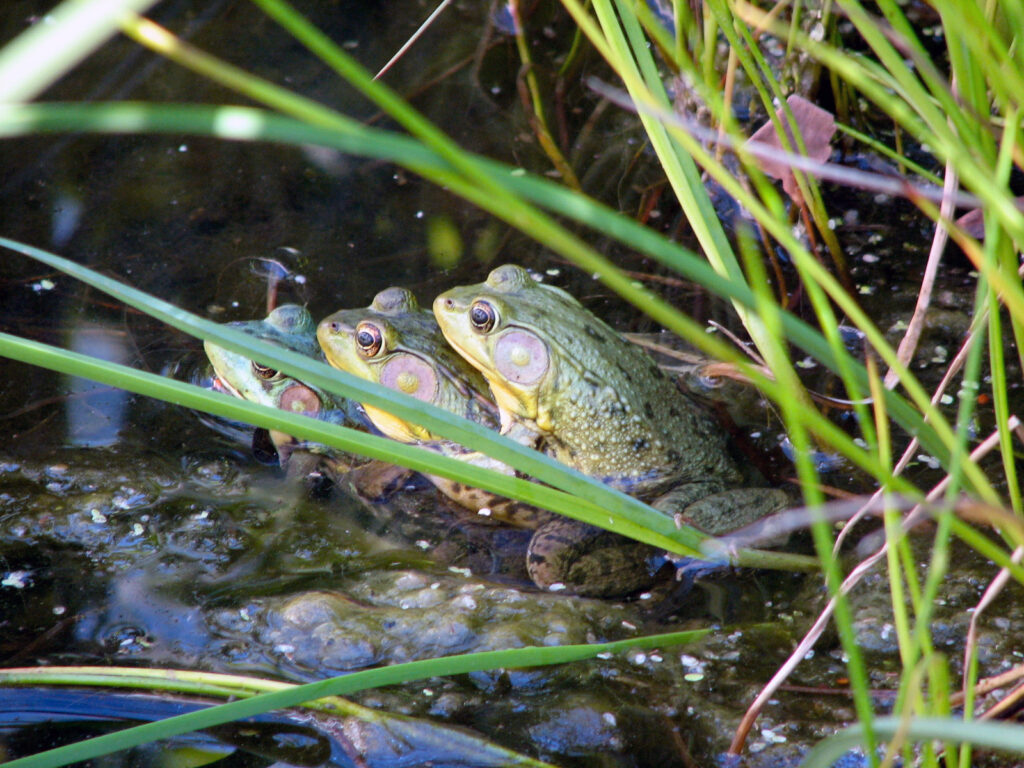
Unfortunately, a severe winter killed all the frogs. Our pond (less than 24″ deep) is just not deep enough for them to successfully hibernate in a severe winter. Toads, on the other hand, hibernate in the soil, and since we have so much exposed soil (i.e. not turf grass), they have been much more successful.
Here’s more about our experiences with green frogs raising their young.
Spring Peeper
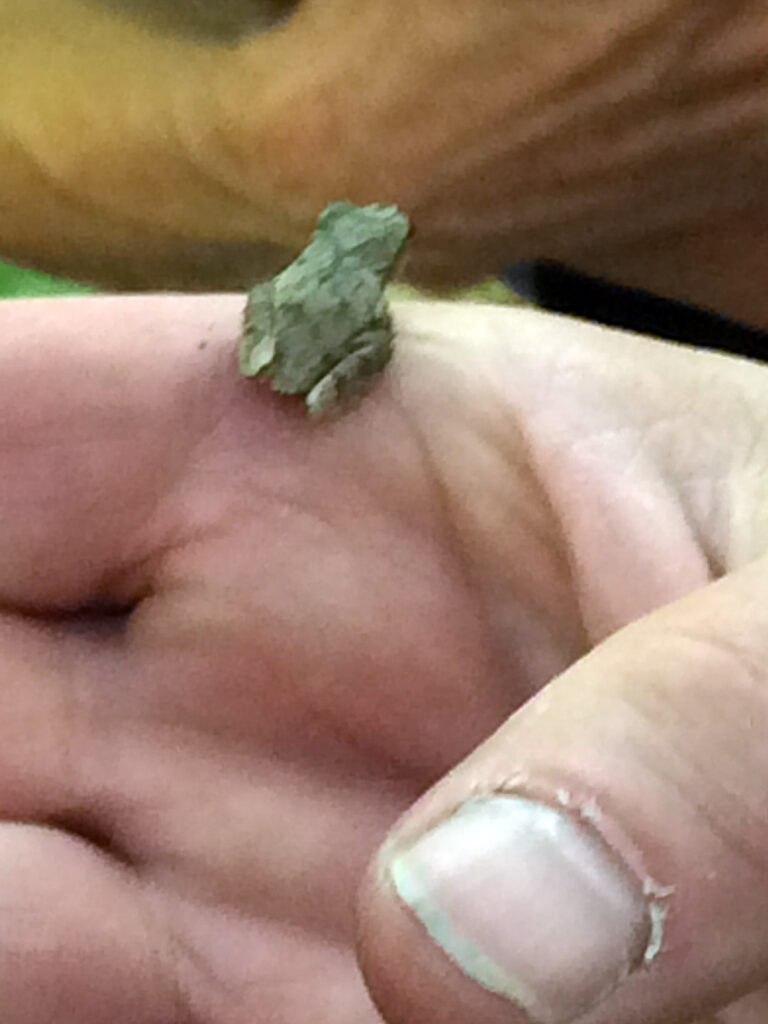
Having a spring peeper was an experience. [This photo shows a spring peeper we saw at a local nature center on our nature guide’s hand.]
We never saw it, which is usually the case since they’re tiny, but we certainly heard it! In fact, I’m sure the whole neighborhood heard it. We went on a walk to see how far away we could hear it: many blocks away.
So far, that has been a one-time experience, one that we miss. We’d welcome its return, but it is certainly much quieter without it!
Resources
- US Fish & Wildlife:
- Wisconsin DNR:
- Beyond Pesticides:
- SUNY-ESF:
- Frogs and Toads of NY
- VIDEO: Amphibians in your backyard – Learn about backyard amphibian habitat, specifically toads and salamanders
- Mother Earth News:
- Get rid of insects in the garden with toads – They eat 100 insects each night!
- Mass Audubon:
- Frog species in Massachusetts (would be similar species here in CNY)
- Frog Life:
- Frogs and toads in my garden (a UK site)
- Wild Hope:
- NY Times:
- The Humane Gardener:
- Treehugger:
- How pool owners can save the lives of frogs (and other creatures)
- Leaf & Limb:
- The Humane Society:
- Robyn’s Pond Page:
- Nature Conservancy’s Cool Green Science:
- Finding reptiles and amphibians for fun – IMPORTANT! Warns against “flipping” i.e., turning over rocks and logs to find them – in other words, destroying their homes!
- Missouri Dept. of Conservation:
- Toad and frog facts – Colorful, harmless, vocal, and valuable
- National Wildlife Federation:
- David Suzuki Foundation:
- Snake-friendly gardening helps control slugs and mice (NOTE: Snakes are reptiles, not amphibians)
- Bird Watcher’s General Store:
Reflections
Every creature is better alive than dead, men and moose and pine trees, and he who understands it aright will rather preserve its life than destroy it.
~ Henry David Thoreau, The Maine Woods, 1848
